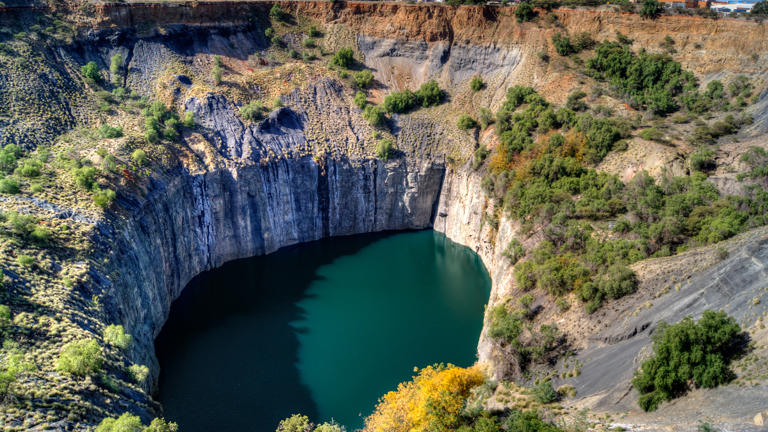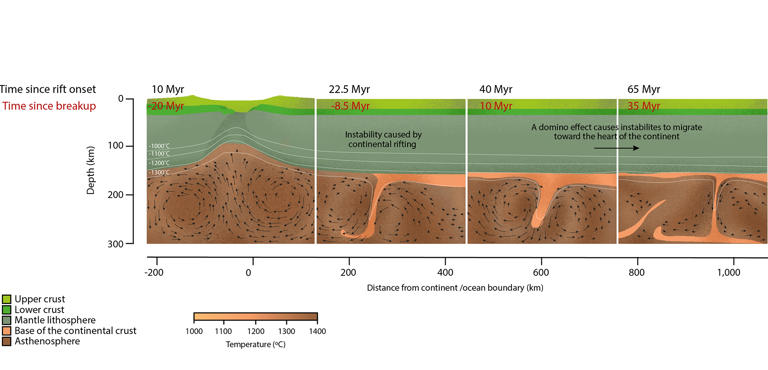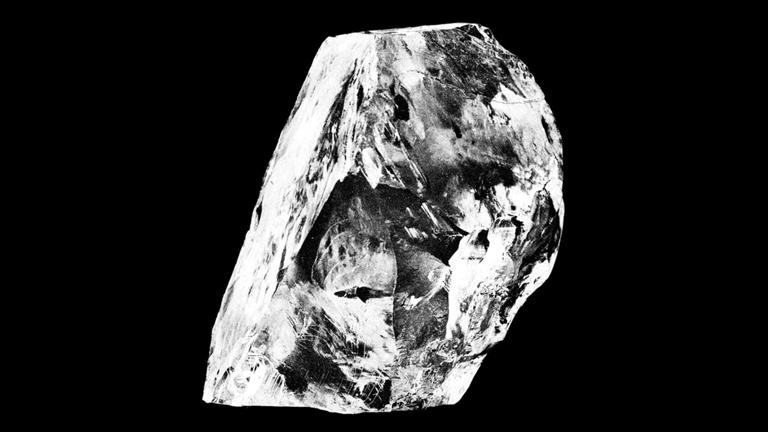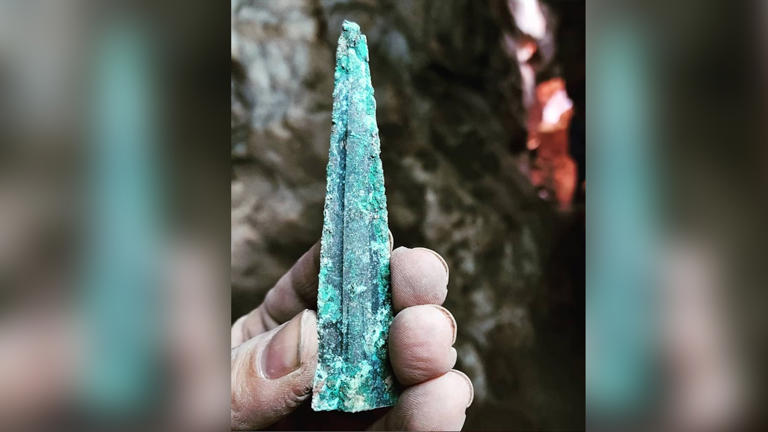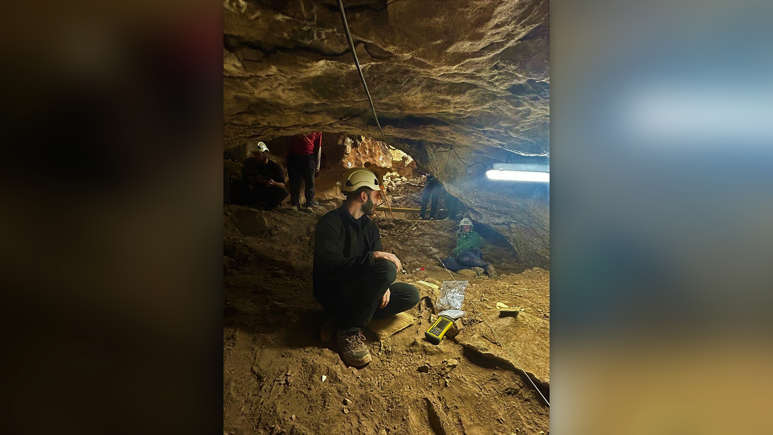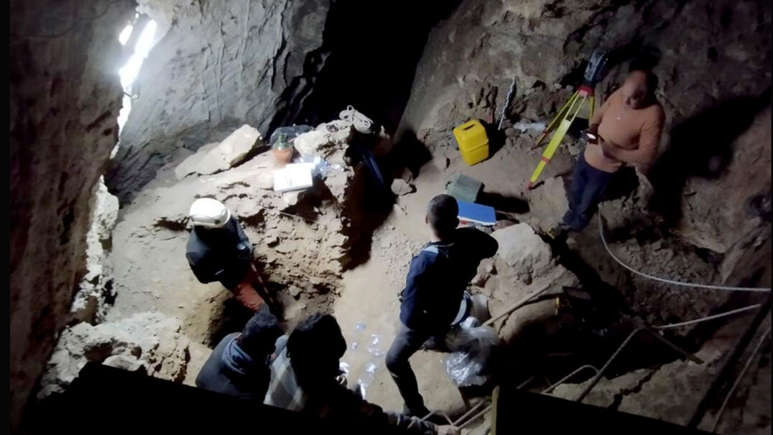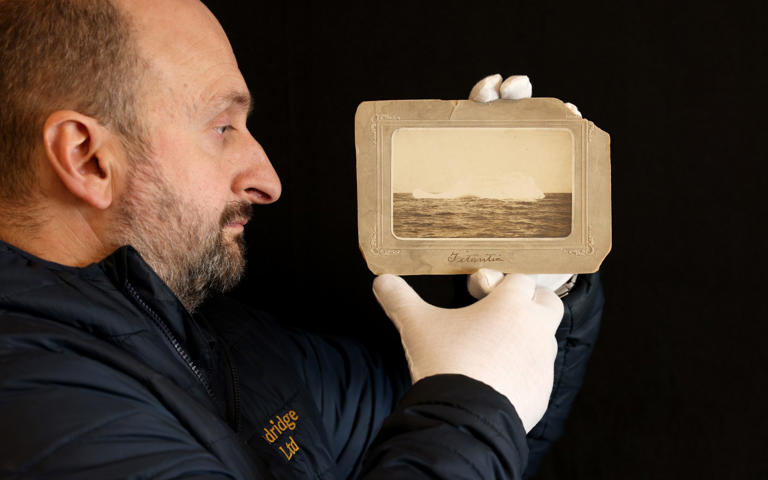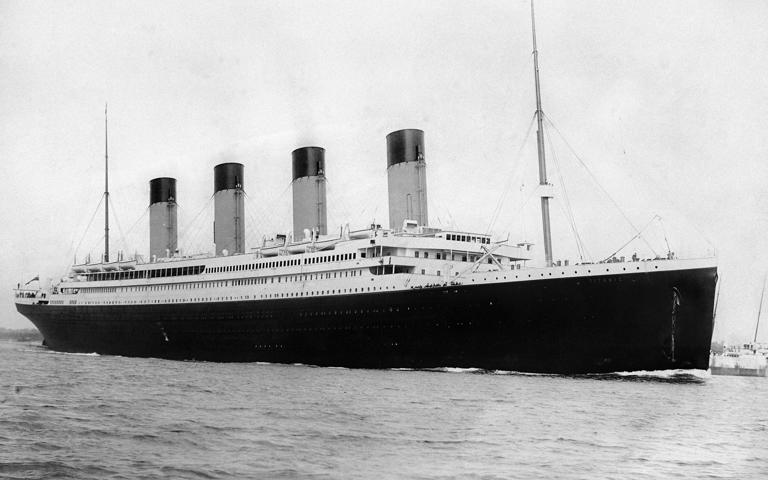FROM WHITE MISCHIEF TO BILL & TED, JOSS ACKLAND WAS AN ACTOR OF RARE POISE, RANGE AND PATHOS
![]()
![]()
![]()
![]()
![]()
![]()
![]()
![]()
![]()
![]()
![]()
![]()
![]()
From White Mischief to Bill & Ted, Joss Ackland was an actor of rare poise, range and pathos
Joss Ackland’s elegant bearing, natural aplomb and English theatrical training meant that he never lacked for work on stage or screen, largely playing authority and establishment figures — although these movie roles were a bit ironised and sent up in the parts he got offered in the 90s and 00s (to his reported chagrin).
But growing up, I was aware of him only via that rich, mellifluous voice of his, like melted butterscotch, in an inordinate number of TV ads: his tones were received pronunciation with a dash of naughtiness and insinuation, that of a TV newsreader or bishop who loved to savour a fine wine, or a decent cigar.
Ackland’s masterpiece had to be his performance in Michael Radford’s fierce and disturbing 1987 movie about the “Happy Valley” set, White Mischief (a movie from the Thatcherite 80s which probably deserves a revival). It won Ackland a Bafa nomination while also propelling the exquisitely-cheekboned beauties of Charles Dance and Greta Scacchi into the public eye. Hugh Grant had a small role. Ackland was a supporting turn and perhaps a little upstaged by the younger eye-candy stars but he packed a devastating punch.
He was Sir Jock Delves Broughton, who was a senior member of the louche set of English expat aristocrats in Kenya during the second world war — leisured but jaded colonialists exploiting the handsome income from farming, with little to do but drink, take drugs and have affairs. And all this hedonism has had an added touch of decadence because of their apparent indifference to the Mother Country’s wartime hour of trial thousands of miles away. Sir Jock is married to the beautiful, highly-strung and decades younger Diana (Greta Scacchi) who married Jock on the understanding that she was allowed to have affairs — and is now carrying on a passionately erotic liaison with Josslyn Hay, Earl of Erroll, played by Dance.
Ackland’s Jock is a contemptible but tragic chump and cuckold, having to pretend he doesn’t notice or doesn’t mind, but is in fact eaten up with rage. It leads to violence and a terrible confrontation with Diana — a great scene with a shocking end. Ackland was every inch the establishment figure who hates himself for committing the cardinal English sin: making a fuss, and he hates his wife for forcing him to make a fuss. Ackland played it perfectly.
But Ackland could also play lower down the social scale — and he had a potent if small role in Michael Tuchner’s brutal 1971 Brit-crime film Villain with Richard Burton as the Kray-esque mobster having to deal with lowlifes and coppers: Ackland played the cringing crim who is partnered up with TP McKenna’s grandee gangster. Ackland was part of the blue-chip generation of beautifully spoken, classically trained British performers who lent substance and flair to many movies like this.
Ackland fans love him for his outrageous appearance in the Brit horror pulp classic The House that Dripped Blood from 1970, a portmanteau movie in which he co-starred with Peter Cushing in the story about his obsession with an exhibit in a waxwork museum which leads to a grotesque conclusion.
Some of the film work Ackland gamely took on was perhaps not out of the top drawer — as Ackland himself admitted — he was Matisse in James Ivory’s gruesome Surviving Picasso with Anthony Hopkins as the great artist, and actually found himself in two Demi Moore films while reportedly having no very great opinion of her abilities.
He could play fruity foreign accents with sly wit and relish and was a stoutly plausible presence as the Soviet ambassador in John McTernan’s The Hunt for Red October starring Sean Connery and Alec Baldwin in 1990— and in fact played another Russian, the Soviet defence minister this time, in Kathryn Bigelow’s K19: The Widowmaker.
In Lethal Weapon 2 he was the dodgy South African politician and smirking bad guy Arlen Rudd. Younger audiences were to discover Joss Ackland through his exotic performance as a freaky teacher-turned-terrorist of the future in Bill and Ted’s Bogus Journey called Chuck De Nomolos who has an animus against our two laidback heroes.
Ackland was the model English character actor who probably found his best work on the stage or on television but had a robust career in the movies — and his Sir Jock Delves Broughton was a mighty achievement, exposing the hypocrisy and wretchedness in Britain’s entitled upper classes.
FOUNTAINS OF DIAMONDS THAT ERUPT FROM EARTH'S CENTER ARE REVEALING THE LOST HISTORY OF SUPERCONTINENTS











Fountains of diamonds that erupt from Earth's center are revealing the lost history of supercontinents
In the twilight of the Cretaceous, 86 million years ago, a volcanic fissure in what is now South Africa rumbled to life. Below the surface, magma from hundreds of miles down shot upward as fast as a car on the autobahn — if that car were barreling through solid rock — chewing up rocks and minerals and carrying them toward the surface in a reverse avalanche.
What this looked like on the surface is lost to history, but it may have been as dramatic as the eruption of Mount Vesuvius. What it left behind was a series of carrot-shaped, igneous-rock-filled tubes under low, weathered white hills.
In 1869, a shepherd's discovery of a huge, sparkly rock on a nearby riverbank would catapult this unassuming landscape into infamy. The rock was an enormous diamond that would eventually be known as the Star of Africa, and the white hills hid what would become the Kimberley Mine, the epicenter of South Africa's diamond rush and quite possibly the largest hole on Earth ever dug out by hand.
Thanks to the Kimberley Mine, often called "The Big Hole," the formations where diamonds are found are now known as kimberlites. The formations are sprinkled across the globe, from Ukraine to Siberia to Western Australia, but they're relatively small and rare. What makes them special is that their magmas come from very deep down. There are still questions about precisely how deep, but they are known to arise from beneath the bases of continents at the border of the hot, convecting mantle. Some may originate even deeper, at the transition between the upper and lower mantle.
As such, these magmas tap into very deep, very ancient rock, and they interact with other processes that occur only in the deep Earth — namely, the formation of diamonds. To crystallize plain-old carbon into hard, sparkly diamond requires great pressure, so these gems form at least 93 miles (150 kilometers) down, in the deepest layers of the lithosphere, the scientific term for the crust and relatively rigid upper mantle. Some, known as sub-lithospheric diamonds, form even deeper, down to around 435 miles (700 km). Kimberlites, on their eruptive journeys to the surface, catch diamonds and drag them into the upper crust, delivering them relatively unscathed and sometimes even containing pockets of fluid from the mantle itself.
Researchers have long known that as tectonic plates grind under one another, they drag down carbon from the surface to depths where it can crystallize into diamond. Now, they're starting to see that what goes down must (sometimes) come up, and that this reappearance of carbon — now pressed into glittering gems — is also tied to the movements of tectonic plates. In particular, diamonds seem to erupt when supercontinents break apart.
"While these are different processes, together the diamonds and kimberlite can inform us about the life cycle of supercontinent times," said Suzette Timmerman, a geologist at the University of Bern in Switzerland who studies diamonds.
Coming to the surface
No one has ever seen a kimberlite eruption firsthand. There have been very few in the past 50 million years, and the most recent possible eruption, in the Igwisi Hills of Tanzania, occurred over 10,000 years ago. Not only that, but the main material in kimberlite, the mineral olivine, weathers away quickly on the surface, said Hugo Olierook, a research fellow at Curtin University in Australia.
This makes studying kimberlites challenging. Scientists are perplexed, for example, about the chemistry of the original source of the melted rock in the mantle, as well as about how kimberlites manage to punch through the stable cores of what geoscientists call "cratons" — the thick interior parts of continents that usually resist disruption.
A handful of recent studies are sketching out a new explanation for why this happens. The first clue is timing. It's long been noted that pulses of kimberlite activity seem to correspond with the approximate timing of supercontinent break-ups, said Kelly Russell, a volcanologist at the University of British Columbia in Canada. A 2018 study led by Sebastian Tappe, a geoscientist at The Arctic University of Norway, took a global look at this coincidence of timing and found that it up: There was a spike in kimberlite eruptions around the breakup of the supercontinent Nuna some 1.2 billion years ago to 1 billion years ago.
Another pulse occurred between 600 million and 500 million years ago, coinciding with the breakup of the supercontinent Rodinia, according to the 2018 research, followed by a smaller pulse between 400 million and 350 million years ago. But the most prolific period, accounting for 62.5% of all known kimberlites, occurred between 250 million and 50 million years ago. That range happens to coincide with the breakup of the supercontinent Pangaea. To some researchers, this suggests that supercontinent cycles are crucial for kimberlite eruptions.
"The breakup of these continents are fundamental to getting these diamonds up from these deep depths," Olierook told Live Science.
Olierook and his team recently analyzed the ages of unusual pink diamonds from a formation in western Australia and found they likely came to the surface about 1.3 billion years ago, within the window of Nuna breaking up. The new discovery links diamonds to the stretching of continental crust, Olierook said.
"It's those extensional forces that allow those little pockets of deep-seated magma to rise to the top," he said.
The march of the kimberlites
The tricky question, though, is how this happens. To get a kimberlite, there are two key ingredients: deep, melted rock rich in fluids, and a continental disruption that may bring that melt to the surface. No one knows what causes the formation of the kimberlite melt, but the chemistry of kimberlites is very different from that of the mantle rock it melts from. Kimberlites are also rich in volatiles such as water and carbon dioxide, which is what makes them so buoyant and high-velocity. They shoot through the crust like Champagne rushing through an uncorked bottle, ascending at up to 83 mph (134 km/h). For comparison, the magmas that flow out of the volcanoes in places like Hawaii max out at around 13.5 mph (21.7 km/h).
An August 2023 study used computer modeling to figure out how kimberlites can burst through the thick hearts of continents. The researchers found that the process of rifting, in which continental crust pulls apart, was key. The stretching creates peaks and valleys at both the surface and base of the continent. At the base, these jagged edges allow warm mantle materials to rise, and then cool and fall, creating eddies. These eddies mix materials from the base of the continents, making the frothy, buoyant kimberlites, which can then shoot up toward the surface, carrying any diamonds they might happen to run into on their way up.
This process began right where the continent was rifting apart, but modeling showed that these jagged regions of eddy formation destabilized neighboring areas on the craton, creating the same dynamics closer and closer to the continental interior. The result was a pattern of kimberlite eruptions starting near the rift zone but gradually marching into areas of stable crust. This slow march explains why kimberlite pulses don't peak until a bit after a big breakup begins, said Thomas Gernon, a geologist at the University of Southampton in the U.K. who led the study.
"You will see these peaks of kimberlites seem to happen after big supercontinents have broken up," he said. "But it's not just a one-hit thing; it's something that may last quite a long time after supercontinent breakups."
Kimberlites may be quite common at the bases of continents, said Tappe, whose 2018 study on kimberlites and supercontinent breakups came to similar conclusions as Gernon's. Tappe and his team found that these melts may have been particularly prominent during the breakup of Pangaea, because the mantle, which has been slowly cooling since Earth solidified, reached just the right temperature around 250 million years ago to have kimberlite-type melts dominate. Prior to that period, the rocks in that region may have been too hot to get that combination of melt and volatile material that makes kimberlites so eruptive. This may be one reason why most kimberlite diamond mines date from the breakup of Pangaea.
Messages in a diamond
As the dull, white hills that once covered the Kimberley Mine attest, kimberlites themselves can't say much about the mantle where they originated. They weather away within a few years, losing much of what makes them interesting on a chemical level. However, the diamonds carried within kimberlites are a different story. They have their own formation histories that don't coincide with the formation of the kimberlite magma itself. But their chance meetings hundreds of miles below the surface mean that bits of the mantle that would never otherwise see daylight can reach human hands.
These bits are microscopic pockets of fluid from the time the diamonds formed. Many of these "inclusions" date back hundreds of millions of years, while a few specimens count their ages in the billions. Plus, some of these diamonds form very deep in the mantle, so certain stones can carry materials from as far down as the boundary between the mantle and the core.
"Only in kimberlites we can see samples coming from 400 kilometers [250 miles], even down to 2,000 kilometers [1,200 miles]," said Maya Kopylova, a professor of diamond exploration at the University of British Columbia. "No other magmas on Earth do that."
Related: What's the deepest-forming gemstone on Earth?
While the eruption of diamonds can trace a story of supercontinent breakup, their formation may also provide a clue to how continents come together. In a study published in October 2023 in the journal Nature, Timmerman studied diamonds from Brazil and Guinea that formed between 186 and 434 miles deep (300 to 700 km). By dating fluid inclusions within the diamonds, Timmerman and her colleagues estimated that the diamonds formed around 650 million years ago, when the supercontinent Gondwana was forming. The diamonds probably stuck to the base of the continent and sat there for millennia until Gondwana broke up during the Cretaceous period and kimberlites brought them to surface, Timmerman told Live Science.
What was important about these superdeep diamonds, Timmerman said, was that they helped explain how continents grow. Supercontinents are built when oceanic crust pushes under continental crust. This process, called subduction, tugs two continents on opposite sides of an ocean closer together. This same subduction brings carbon to the depths, where it can be compressed into diamond.
Down in the mantle, bits of these subducting plates can become buoyant and rise back up, carrying superdeep diamonds with them, Timmerman explained. This material may stick to the bases of continents for millennia, helping them grow from below. It may also explain how superdeep diamonds land in a place where a kimberlite can catch them.
"Deep diamonds can inform us more about subduction processes, mantle convection, liquid-rock interactions and other processes happening below the crust during supercontinent cycles," Timmerman said.
There are many other questions to answer, she added. For instance, scientists still don't know how subducted plates change the bases of supercontinents and whether that affects how long a supercontinent lasts before breaking up. Another open question is whether this recycled crustal material influences when and where kimberlite magmas form.
Ancient diamonds may also tell us about other milestones in Earth's chaotic history.
Some diamonds are forged from carbon that was incorporated into Earth upon its formation, Olierook said, while others form from carbon from ancient life, dragged down along with slabs of subducted crust. It's possible to tell which process formed the diamonds by analyzing the molecular structure of the carbon within diamond inclusions. These inclusions can thus hold secrets about hazy numbers in Earth history, such as when widespread subduction began or when life in the oceans became prevalent.
But to get at those answers, researchers will need to get better at figuring out how old diamonds are. And they'll need more diamonds that are both ancient and from the deepest depths.
"Going back in time from the most recent supercontinent breakup to the ones before that," Olierook said, "I strongly suspect there are still lots to be discovered."
THE MOODY BLUES FOUNDER MIKE PINDER HAS DIED AGED 82











The Moody Blues founder Mike Pinder has died aged 82
The Moody Blues founder and keyboardist Mike Pinder has died aged 82, his family have confirmed.
The family of The Moody Blues founder Mike Pinder have announced that the keyboardist has died at the age of 82. A cause of death has yet to be confirmed.
The official statement regarding Pinder’s death read: “Michael Thomas Pinder died on Wednesday, April 24th, 2024 at his home in Northern California, surrounded by his devoted family.”
“Michael’s family would like to share with his trusted friends and caring fans that he passed peacefully. His final days were filled with music, encircled by the love of his family. Michael lived his life with a childlike wonder, walking a deeply introspective path which fused the mind and the heart.”
“He created his music and the message he shared with the world from this spiritually grounded place; as he always said, ‘Keep your head above the clouds, but keep your feet on the ground.’ His authentic essence lifted up everyone who came into contact with him. His lyrics, philosophy, and vision of humanity and our place in the cosmos will touch generations to come.”
Pinder was the band's original keyboardist and vocalist, and he played a key role in shaping their sound; his use of the Mellotron, an early type of synthesizer, was particularly influential in the band's music and helped define their progressive rock style.
Pinder was involved in many of The Moody Blues' early albums, including "Days of Future Passed" (1967), "In Search of the Lost Chord" (1968), and "On the Threshold of a Dream" (1969).
His distinctive vocals and keyboard work contributed to the band's success during their peak years, but he would leave the band in 1978 expressing a desire to spend more time with his family and take a break from the demands of the music industry.
Pinder released his debut solo album, “The Promise,” in 1976, even before officially departing from The Moody Blues. The album featured a blend of rock and classical influences and included contributions from other notable musicians such as guitarist Joe Walsh.
In 1994, Pinder released another solo album titled “Among the Stars.” The album included collaborations with former Moody Blues bandmate Ray Thomas and other musicians.
ANCIENT HUMANS USED CAVE IN SPAIN AS BURIAL SPOT FOR 4 MILLENNIA, 7,000 BONES REVEAL













Ancient humans used cave in Spain as burial spot for 4 millennia, 7,000 bones reveal
Starting about 7,000 years ago, ancient humans in what is now northeastern Spain buried their dead deep in a cave, creating a necropolis of sorts that spans about four millennia and now contains more than 7,000 bones, according to archaeologists. And there are signs it may have been used for tens of thousands of years before that.
The Cova dels Xaragalls (Cave of the Ravines) was "a collective burial place," archaeologist Antonio Rodríguez-Hidalgo, a researcher at the Catalan Institute of Human Paleoecology and Social Evolution (IPHES) and the Merida Institute of Archaeology, told Live Science in an email.
He said people were buried in communal graves within the cave starting about 7,000 years ago, during the late Neolithic or New Stone Age, though most of the Chalcolithic ("Copper-Stone") period and throughout the Bronze Age, which ended in Spain about 3,000 years ago.
An analysis of the grave goods buried with the dead — typically ceramics, flint tools and necklaces — suggests that high-status individuals were buried alone in the cave during the late Chalcolithic and Bronze Age, while communal burials within the cave were still used for people lower in society, the researchers found.
Grave goods were especially abundant during the Bronze Age, when some individuals were buried with rich collections of weapons and other items, Rodríguez-Hidalgo said.
One of the Bronze Age skulls has a hole in the cranium made by a trepanation; this individual seems to have suffered from several illnesses, and this may have been an attempt at a cure, he said.
However, "we also know that [he or she] did not survive the intervention since there is no bone regeneration in the hole," Rodríguez-Hidalgo said.
This is the only trepanated skull found in Cova dels Xaragalls so far, but more than 100 trepanation scars have been found on other prehistoric skulls from Spain, he said.
Neanderthal connection?
The Cova dels Xaragalls is in the mountains about 56 miles (90 kilometers) west of Barcelona. It was excavated several times during the 20th century and in 2008; Rodríguez-Hidalgo and his colleagues from IPHES excavated more of it in December 2023.
In addition to indications that the cave was used for burials from the Neolithic until the Bronze Age — a span of roughly 4,000 years — the latest excavations revealed bones of wild goats and charcoal in part of the cave that have been dated to more than 45,000 years ago. At that time, the region was inhabited by Neanderthals; paleoanthropologists think anatomically modern humans — Homo sapiens — replaced Neanderthals throughout Europe by about 40,000 years ago, although modern genetics shows they sometimes interbred.
"This opens the possibility that Neanderthals could have used the cave as well," Rodríguez-Hidalgo said. "This is something to confirm."
It's not clear whether the cave was used continually for burials, or if it was used by various groups in different periods.
"At the moment, we have a few dates that allow us to understand that the cave was used as a tomb for millennia," Rodríguez-Hidalgo said. "Now we have to resolve whether it was continuous or not — we need to undertake a comprehensive radiocarbon dating to clarify this point."
Burial place
The latest discoveries can help chart how burial customs have changed over time. And although many details of the burials have varied over the millennia the cave was used for this purpose, each grave seemed to be given its own burial place, Rodríguez Hidalgo said.
"The people who lived in the fertile areas of the valleys had to climb a small mountain with the bodies of the dead to put them there," he said, adding that it seemed that different groups, from the Neolithic until the Bronze Age, respected the earlier burials.
The IPHES archaeological team plans to return to Cova dels Xaragalls this month.
"We are doing ancient DNA analysis, ceramic analysis, paleoanthropological studies, and [analyzing] the composition and origin of the metals we have found as grave goods," Rodríguez-Hidalgo said. Because the cave was used for burials for such a long time, "this is an important place," he said.
GOLD POCKET WATCH FOUND IN TITANIC SOLD FOR RECORD-BREAKING PRICE












Gold pocket watch found in Titanic sold for record-breaking price
Agold pocket watch recovered from the body of the richest man on the Titanic on Saturday sold for a record price of £1.175 million.
The 14-carat gold Waltham watch, which belonged to business magnate John Jacob Astor, beat the £1.1 million paid in 2013 for the violin played by the bandmaster of the Titanic.
The leather case that protected Wallace Hartley’s violin from the freezing water of the Atlantic also sold at the auction today for £360,000. Hartley placed the wooden instrument in the valise which he then strapped to his body, possibly for added buoyancy, as he plunged into the icy water.
Hartley, like Astor, died in the 1912 disaster which claimed the lives of 1,522 people.
The two items were among dozens of Titanic-related pieces of memorabilia that went under the hammer at Henry Aldridge & Son.
Other notable lots include a chess board made from wood recovered from the wreck site of the Titanic fetched £42,000, and an extremely rare pocket book of sailings for Titanic’s voyages for the rest of 1912. According to the schedule, the “unsinkable” ship would have made another 13 crossings of the Atlantic, with the last being on Dec 18 – the book sold for £70,000.
Andrew Aldridge, the auctioneer said: “The Astor watch has now become the most valuable piece of Titanic memorabilia ever sold, just beating the £1.1 million paid for the violin over 10 years ago.
“It is a remarkable result. We expected the watch to sell for £150,000 but we had some incredible bidding on it and it eventually went to a US collector.
“The results demonstrate the ongoing fascination of the Titanic story 112 years after she sank.”
On the night of the disaster, Astor, 47, saw his young, pregnant wife Madeleine into a lifeboat but was turned back by Charles Lightoller, the first officer. Rather than try his luck with another lifeboat, the impeccably dressed Astor was last seen smoking a cigarette on the starboard of the bridge wing chatting to a fellow first-class passenger.
Astor’s body was recovered from the north Atlantic seven days later.
His exquisite pocket watch, which was engraved J.J.A, was removed from the American’s body. The timepiece, along with his £55 million estate (£7 billion today), was left to his 20-year-old son Vincent.
It is not known what condition the watch was in at the time but it would have stopped working at 2.20am – the moment the Titanic and Astor disappeared into the Atlantic.
Vincent Astor later had the watch restored and repaired and wore it until 1935 when he gifted it to his godson, William Dobbyn.
Dobbyn’s father, also William, had been Astor’s executive secretary and was close to Vincent. Dobbyn Snr had accompanied Astor and Madeleine on their extended honeymoon to Egypt and France in September 1911.
The newly-wedded couple boarded the Titanic at Cherbourg on April 10, 1912, to return to America but Dobbyn stayed behind in France, a move that saved his life.
The gold watch was acquired from the Dobbyn family by the private collector of Titanic memorabilia in the 1990s.
Since then, it has been displayed at various museums including the National Geographic Exhibition in Washington DC and the Titanic Museum, “The World’s Largest Titanic Attraction” in Missouri, US.
Articles - Latest
- FROM WHITE MISCHIEF TO BILL & TED, JOSS ACKLAND WAS AN ACTOR OF RARE POISE, RANGE AND PATHOS
- FOUNTAINS OF DIAMONDS THAT ERUPT FROM EARTH'S CENTER ARE REVEALING THE LOST HISTORY OF SUPERCONTINENTS
- ANCIENT HUMANS USED CAVE IN SPAIN AS BURIAL SPOT FOR 4 MILLENNIA, 7,000 BONES REVEAL
- THE MOODY BLUES FOUNDER MIKE PINDER HAS DIED AGED 82
- GOLD POCKET WATCH FOUND IN TITANIC SOLD FOR RECORD-BREAKING PRICE
- 5 CATASTROPHIC MEGATHRUST EARTHQUAKES LED TO THE DEMISE OF THE PRE-AZTEC CITY OF TEOTIHUACAN, NEW STUDY SUGGESTS
- FRENCH PALME D’OR WINNER LAURENT CANTET DIES AGED 63
- Norman Lear obituary
- AN UNHOLY TRAFFIC: HOW THE SLAVE TRADE CONTINUED THROUGH THE US CIVIL WAR
- QUEEN CHARLOTTE WAS ‘PERSON OF COLOUR’, MUSEUM CLAIMS IN LGBT GUIDE
- JEANETTE WINTERSON: I DIDN’T BELIEVE IN GHOSTS… UNTIL I STARTED LIVING WITH THEM
- ANCIENT HUMAN ACTIVITY DISCOVERED IN KILOMETER-LONG LAVA CAVE
- DNA ANALYSIS SPANNING 9 GENERATIONS OF PEOPLE REVEALS MARRIAGE PRACTICES OF MYSTERIOUS WARRIOR CULTURE
- LOST CITIES HIDDEN FOR THOUSANDS OF YEARS DISCOVERED UNDER FOREST
- LETTER: ALAN ARKIN OBITUARY
- ARCHAEOLOGISTS CRACK MYSTERY OF ANCIENT MAYA AFTER 7,000-YEAR-OLD REMAINS FOUND
- NEW JERSEY REP. DONALD PAYNE JR. DEAD AT 65
- WORLD'S TALLEST WOMAN' MARIA FELICIANA DOS SANTOS, 7FT3, DIES AGED 77
- UNDERWORLD DISCOVERY CHALLENGES OUR UNDERSTANDING OF HUMAN EVOLUTION
- MUSLIM SOLDIER MEMORIAL FUND £1 MILLION TO IMPROVE RELATIONS AFTER ISLAMOPHOBIA ISSUES
- SCIENTISTS DISCOVER 1ST-OF-ITS-KIND CELL PART BORN FROM A SWALLOWED MICROBE
- NYC TIKTOK STAR EVA EVANS DIES AGED 29
- LADY GARDNER OF PARKES, CONSERVATIVE PEER WHO CHAMPIONED WOMEN’S RIGHTS IN THE EU AND UN – OBITUARY
Articles - Most Read
- Main
- Contact Us
- The science behind Ouija boards
- Cosmic Consciousness - What is Cosmic Consciousness-2
- Cosmic Consciousness-Introduction
- Cosmic Consciousness - Introduction-2
- MASSIVE 6.1 MAGNITUDE EARTHQUAKE HITS NEW ZEALAND AS NATION STILL REELING FROM CYCLONE
- ARCHAEOLOGISTS UNRAVEL THE TRUTH OF APHRODITE, GODDESS OF LOVE, ON VALENTINE'S DAY
- The Human Condition-Thomas Keating
- Cosmic Consciousness First Words - 1V - 2
- Cosmic Consciousness First Words - V -
- Cosmic Consciousness V - 2
- Cosmic consciousness - First Words - IV
- Cosmic Consciousness - What is Cosmic Consciousness?
- Evolution and Devolution-Chapter 2
- The Human Condition - Thomas keating-3
- The Human Condition-2-Thomas Keating
- Drinking From The Mountain Stream - Milarepa
- Cosmic Consciousness-On the Plane of Self Consciousness
- The Human Condition - 4
- Cosmic Consciousness - 3 - On the Plane of Self Consciousness
- Evolution and Devolution-Chapter 1
- The Human Condition - 6
- Shakyamuni Buddha or India the 1st “Black Revolutionary Hero.”
- On the Plane of Self Consciousness - 2
- Milarepa's World
- The Human Condition - 5
- Milarepa's World-2
- The Buddhist System of Liberation
- Contemplation and the Divine Therapy - 2
- On the Plane of Self Consciousness IV
- The Buddhist System of Liberation - 2
- JERRY RAWLINGS, GHANAIAN STRONG MAN WHO CAME TO POWER IN A COUP BUT INTRODUCED DEMOCRACY – OBITUARY
- On the Plane of Self Consciousness IV - 2





